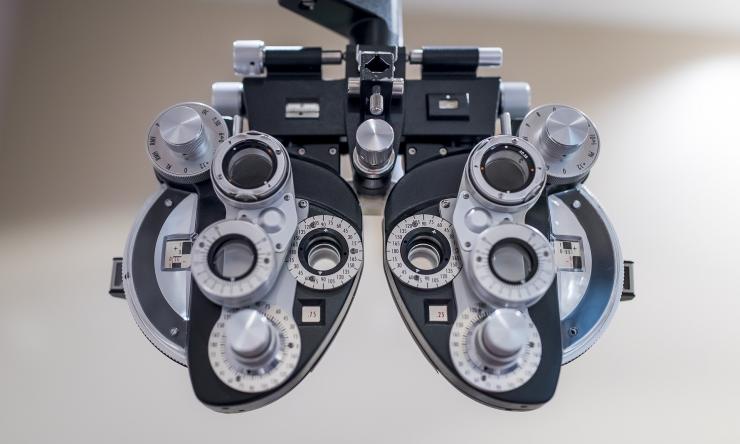New treatment options will bring tears to your eyes

New specialized treatments available at the Alkek Eye Center in the Cullen Eye Institute at Baylor College of Medicine are helping patients with dry eyes feel better and see clearly again.
“Traditional dry-eye treatments include artificial tears, anti-inflammatory drops, nutritional supplements and oral medication,” said Dr. Sumitra Khandelwal, assistant professor of ophthalmology at Baylor. “However, for those patients that still have dry eye signs and symptoms, we now offer new treatment options.”
The new dry eye treatments that are now being offered at Baylor are the PROSE lens treatment, plasma tears treatment and the Thermal 1-Touch treatment.
PROSE Lens
The PROSE lens treatment is available at seven leading eye care centers around the United States, including Baylor. This dry-eye treatment is a dome-shaped transparent lens, similar to a special contact lens that is filled with saline or artificial tears. It is placed on the eye to bathe the cornea with fluid all day long, so the eye never gets dry. “It is really great for our patients who suffer from moderate to severe dry eye or are developing cornea problems. The lens is a savior for those who have failed other treatments,” said Khandelwal.
Platelet rich plasma tears
Artificial tears help lubricate the eyes but for some patients that is not enough to treat their condition. Platelet rich plasma tears are special eye drops made from the patients’ own blood. The preparation process achieves high concentrations of healing factors from the blood and the platelet cells in the blood. The platelet rich plasma is placed in small dropper bottles that are frozen until the patient is ready to use them as a tear replacement therapy.
“The plasma contains many growth factors, anti-inflammatory cells and nutrients found in the tears of a normal person that promote health of the eye surface,” explains Khandelwal. “Patients who get this treatment can use it multiple times throughout the day, and it works better than artificial tears because it has more natural elements.”
Patients who receive this treatment do not have to draw blood often; one batch of the plasma tears can provide a three-month supply.
Thermal 1-Touch
“One of the main types of dry eye is related to dysfunction of the oil glands located in the eye lids,” said Dr. Stephen Pflugfelder, professor and James and Margaret Elkins Chair in ophthalmology at Baylor.
The Thermal 1-Touch treatment safely heats the eyelids to just over 100 degrees Fahrenheit to help liquefy the natural oils in the oil glands. “We massage the eyelid after it is heated to releases oil and help jump-start some glands that aren’t working very well,” said Pflugfelder. “About 80 percent of patients felt better for weeks and in some cases months after receiving this treatment.”
These new treatments help provide patients with longer lasting and more effective relief for their dry eyes. However, Khandelwal says these treatments don’t last forever and some may need to be repeated.
The Alkek Center in the Cullen Eye institute is currently enrolling patients for clinical trials for dry eyes. To enroll, please call 713-798-6100.










